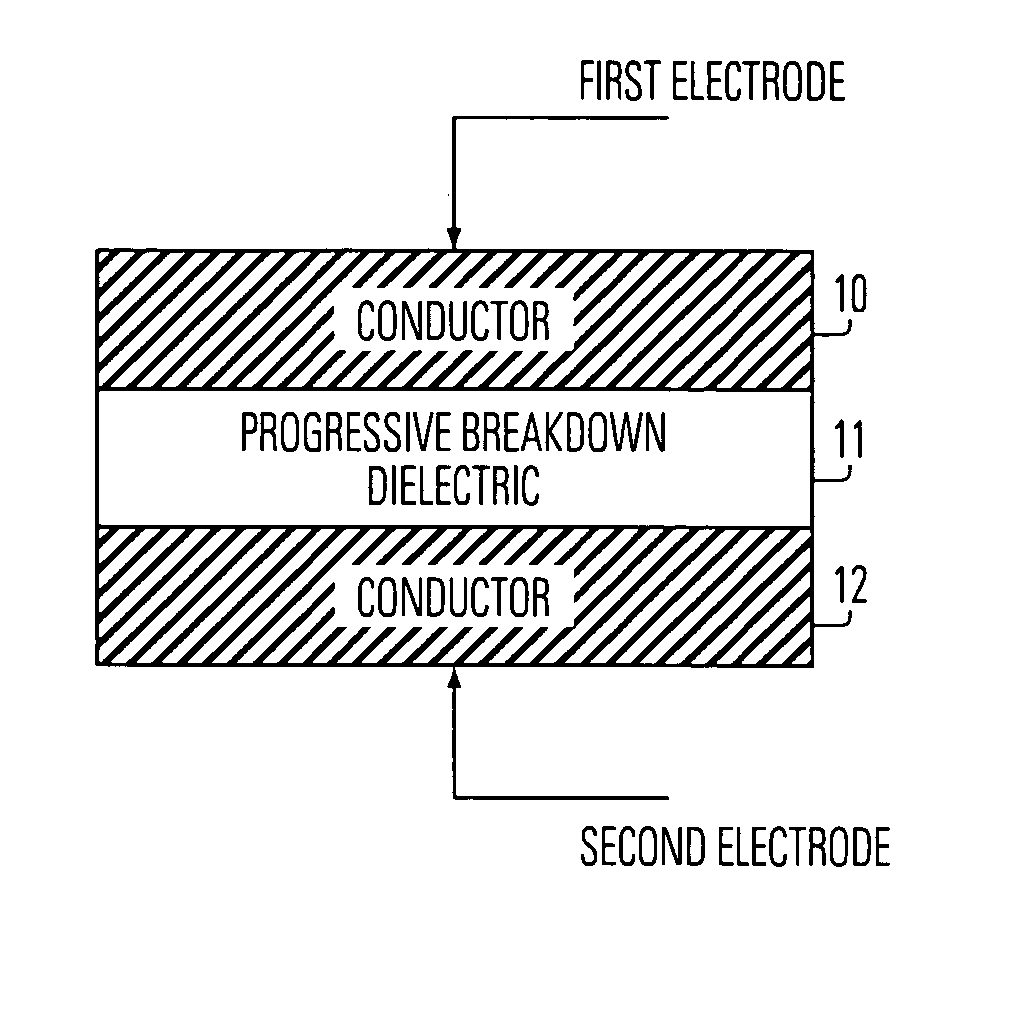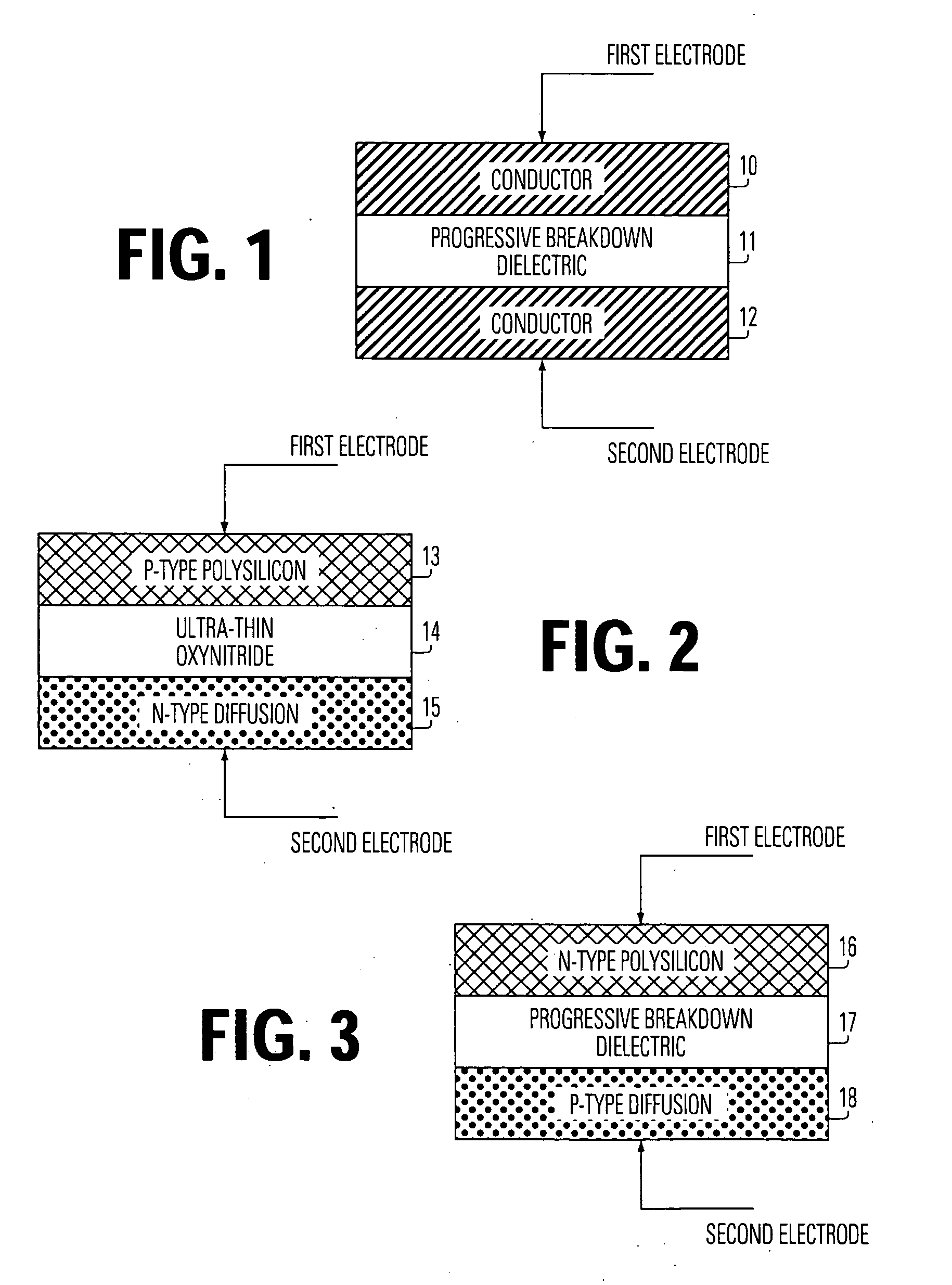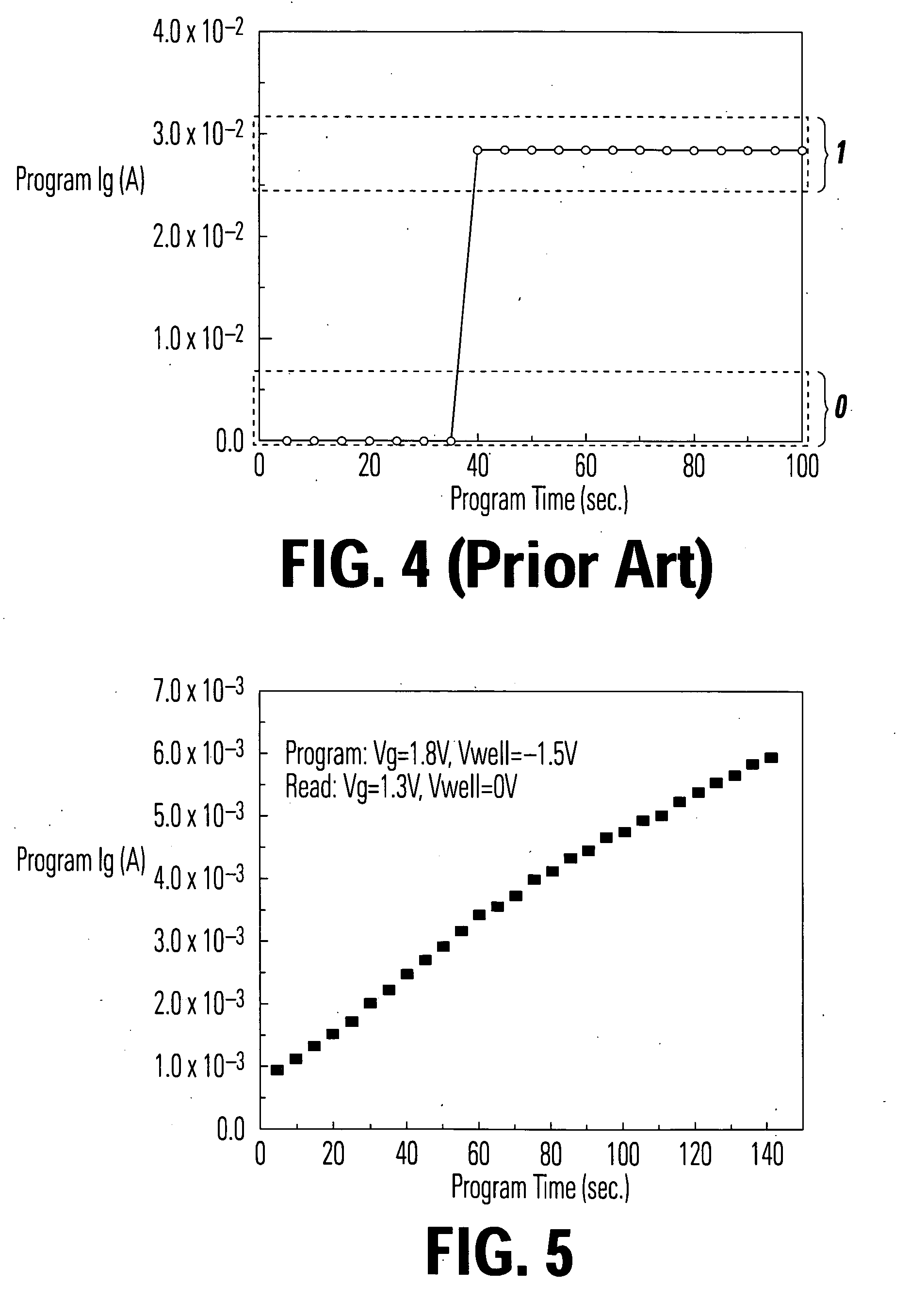Method for manufacturing a multiple-bit-per-cell memory
a manufacturing method and memory technology, applied in digital storage, semiconductor devices, instruments, etc., can solve the problems of complex programming and erasing circuitry, complex programming and sensing technologies, etc., and achieve the effect of easy manufacturing
- Summary
- Abstract
- Description
- Claims
- Application Information
AI Technical Summary
Benefits of technology
Problems solved by technology
Method used
Image
Examples
Embodiment Construction
[0084] A detailed description of embodiments of the present invention is provided with reference to FIGS. 1-36.
[0085]FIGS. 1-3 illustrate basic memory cell structures according to the present invention. As shown in FIG. 1, a memory cell comprises a conductor 10, a progressive breakdown dielectric film 11, and a conductor 12. The conductor 10 acts as a first electrode. The conductor 12 acts as a second electrode. The dielectric film 11 comprises a material having a thickness or other structural feature, characterized by a property subject to progressive change in response to stress. Representative dielectrics which exhibit the progressive breakdown characteristic causing progressive change in resistance, include ultra-thin oxides, such as oxynitride having a thickness of less than 20 Angstroms, and more preferably about 15 Angstroms or less.
[0086] One way in which oxynitride can be formed comprises using standard thermal silicon dioxide growth processes, along with or followed by n...
PUM
 Login to View More
Login to View More Abstract
Description
Claims
Application Information
 Login to View More
Login to View More - R&D
- Intellectual Property
- Life Sciences
- Materials
- Tech Scout
- Unparalleled Data Quality
- Higher Quality Content
- 60% Fewer Hallucinations
Browse by: Latest US Patents, China's latest patents, Technical Efficacy Thesaurus, Application Domain, Technology Topic, Popular Technical Reports.
© 2025 PatSnap. All rights reserved.Legal|Privacy policy|Modern Slavery Act Transparency Statement|Sitemap|About US| Contact US: help@patsnap.com



